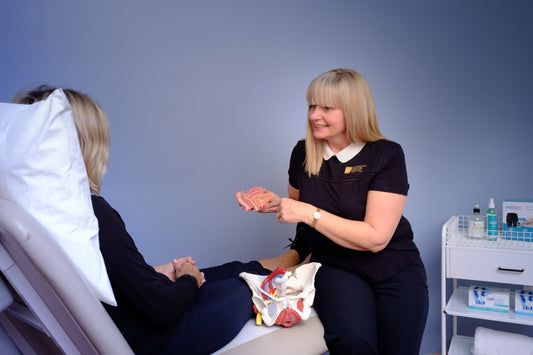Have you ever had a massive skin breakout, or felt more tired than usual, and wondered what the hell was going on? And then -- bang -- your period arrives, and it all makes sense! If you feel like that happens to you month after month, you’re not alone. Cycle-tracking is becoming more common, with built-in apps on iPhones and a host of options in the app stores, but there’s still a huge knowledge gap when it comes to women’s menstrual health and the different menstrual cycle phases. And we’re here to fix that.
Understanding Your Menstrual Cycle Phases
Many menstrual cycle phases are not as commonly known or understood, but just like your period, these stages can have an effect on your mood, your digestion, your skin and hair, and pretty much everything else. Hormones fluctuate all throughout the month, and understanding your cycle is an excellent way to start understanding and predicting how you’ll be feeling all month long.
Now, back to your cycle. The average cycle length for women is 28 days, but your cycle may be longer or shorter than that, anywhere between 21 and 40 days is considered within the normal range, according to the NHS. The menstrual cycle (and the transition into menopause) is controlled by hormones, so at KEY, you’ll see a lot of talk about hormones in general. The specific phases of the menstrual cycle are as follows:
The menses phase
The one we’re all familiar with: this is your period. It typically lasts from day one to day five of your cycle, but again, this can be longer or shorter, generally anywhere from two to seven days. This phase occurs when the thickened lining of the uterus is shed when a pregnancy hasn’t occurred.
Estrogen levels are at their lowest during this phase, which can cause feelings of fatigue. Uterine contractions may cause cramping and discomfort as your body works to expel the uterus lining. Blegh!
The follicular phase
This phase begins on the first day of menstruation (bleeding) and ends with ovulation. During this phase, follicle-stimulating hormone (FSH) is released by the pituitary gland, which stimulates the ovaries to produce the follicles which will become eggs. (Generally only one of these follicles becomes a viable egg!) The developing follicles cause a rise in estrogen levels, which also prompts raised levels of FSH and luteinising hormone.
During this phase, estrogen is on the rise, which may give your energy levels a boost. As estrogen and testosterone continue to increase throughout the second week of your cycle, you may feel more empowered and motivated, too, and notice that your skin improves.
Ovulation
This is the shortest phase of your cycle, lasting just 24 hours. High levels of LH, from the follicular phase, trigger the release of a mature egg. This occurs mid-cycle, generally two weeks before menstruation begins. The egg is released down the fallopian tube. The lifespan of a typical egg is just 24 hours, and unless it meets a sperm during this time, it expires.
Sudden hormone changes during and immediately after ovulation may have you feeling a bit out of sorts.
Luteal phase
Let’s go back to those egg follicles. When the egg was released from its follicle, that structure stays on the surface of the ovary. During this fourth phase, it transforms into a ‘corpus luteum’. This structure releases progesterone along with a bit of estrogen, which helps the uterus lining thicken in preparation for a fertilised egg to implant.
When no egg implants, the corpus luteum dissolves, causing a drop in progesterone.
Your estrogen drops during this phase, while progesterone and testosterone rise. You may notice breakouts or a loss of energy. As progesterone peaks toward the end of your cycle, some women experience bloating and the typical signs of PMS including mood changes, cravings, fatigue, fluid retention and breast tenderness.
The drop in progesterone causes the uterus lining to fall away after a few days, which repeats the cycle!
The Importance of Cycle Tracking
There are a wide range of hormones at play throughout your cycle, with different hormone levels spiking and dropping. This accounts for all the changes in energy levels, mood and more that women can experience throughout the cycle.
Tracking your symptoms and your cycle can help you predict when you’ll be feeling in top form, and when you’ll be feeling a little worse for wear -- which can help you schedule your life around your natural hormone fluctuations. It’s also a good way to stay on top of what feels normal for your body, and notice changes that mean you should check in with a healthcare provider.
The Symptoms of Your Different Cycle Phases
Menstrual symptoms throughout the month can be difficult to navigate, but it doesn’t have to be this way! Many symptoms of your cycle (and your overall health) can be improved when you give your body what it’s craving....like vitamins for PMS, vitamins for thicker hair, and essential vitamins and minerals. Our Key Essentials Blend is designed to help improve your overall health, from keeping healthy joints to making sure your brain stays sharp. And our Key Remedy Blend is designed to help your body combat the problems most commonly experienced throughout your cycle. This is also why it’s so important to take the Key Remedy blend throughout your cycle! Key is designed to support your body not just through menstruation, but through every phase of your cycle. Shop now.












